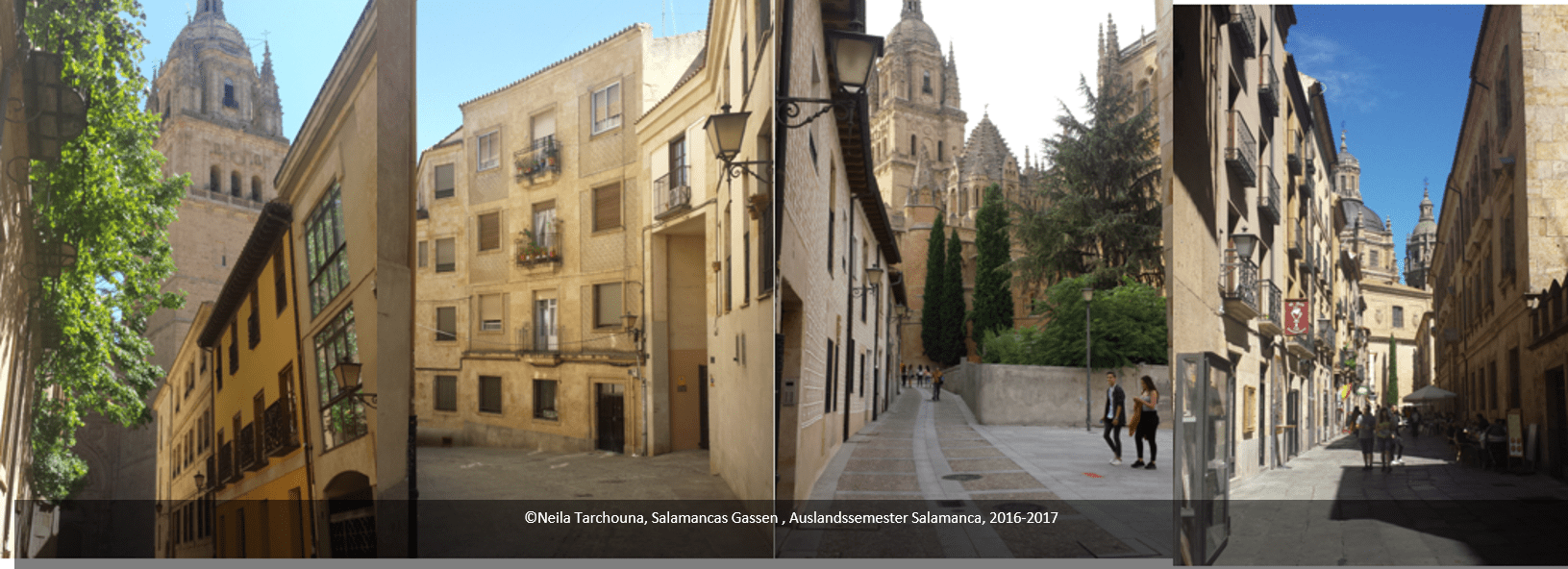La Facultad de Traducción y Documentación (USAL), Salamanca
(1) The University of Salamanca (USAL) is one of the oldest universities in Spain and Europe. It was founded in 1218 by the Leonese King Alfonso IX.
Many historical figures, thinkers and poets earned their doctorates here. Even Columbus was at this university in 1492 to convince the royal committee of scholars of his theory that India lay to the west, while the book Gramática de la lengua castellana (Grammar of the Castilian Language) by the humanist and philologist Antonio de Nebrija was printed in Salamanca in the same year.
By 1540, the Dominican priest Francisco de Vitoria had laid the foundations of international law and taught the equality of all races.
Today, the university is a leader in the field of research in Europe. The range of courses here is very broad in humanities and natural sciences, which is why over 40,000 students study here.
The university’s famous mascot is a frog on a skull. Legend has it that whoever discovers this frog sitting on a skull will pass all exams.

(3) I really enjoyed studying at this university for six months. The teachers are very attentive and the staff is very friendly.
(2) At USAL, for example, in collaboration with the University of Cambridge, students‘ foreign language skills are tested as part of the Association of Language Testers in Europe (ALTE).
On the photo you can see the entrance gate to the Faculty of Translation and Interpreting of the University of Salamanca. This faculty was founded in 1987 and is located near the New Cathedral and the Faculty of Philology.
I have noticed a special tradition on the walls of the university: Back then, the fresh graduates and doctoral students eternalised their names in bull’s blood on the walls. You also find the „Vitores“ painted on the walls – in Spanish-speaking countries it is a sign for a special honourary distinction written on the walls by doctoral students to celebrate their victory (victoria) over the books.






















